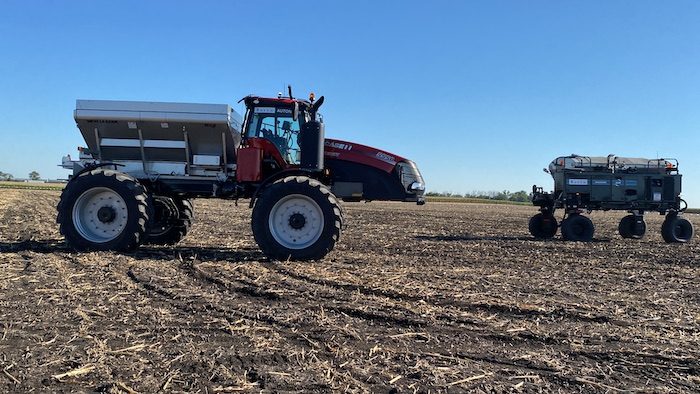CNH released its 8th edition of A Sustainable Year, a digital magazine focusing on the key priorities of the company for 2023 and beyond. An excerpt from the magazine below features a conversation about autonomy with Scott Shearer, Ohio State University professor and chair of food, agricultural and biological engineering.
What do you think about the technologies developed by companies such as Raven?
Shearer: Many new technologies being developed by companies like Raven are extending the capabilities of equipment operators. As field machinery capacity increases, there is more to monitor and manage. By automating mundane tasks, operators’ attention is freed up to focus on more important activities like machine plugging, tillage quality and material feeding rates. Products like OMNiDRIVE increase automation, removing the operator from the field environment and ushering in a new era in agriculture.
What will be the challenges and solutions for feeding a growing global population?
Shearer: The key challenge will be our ability to do more with less. Genetic improvements will continue to be important, and we will learn more about the potential of biologics. Engineering solutions that address production efficiency and sustainability will improve nutrient use efficiency, ensure seed germination and emergence uniformity, target pesticide application, eliminate harvest loss and grain damage, and protect our natural resources base by reducing the offsite movement of soil, nutrients and pesticides. Technologies on the horizon include autonomy, drones for spray application and AI-driven vision systems. While many of these developments are focused on plant production, we are beginning to see similar technological gains in the animal industry, for example robotic milkers, robotic feed carts and animal health monitoring.
What makes farming ripe for automation?
Shearer: Precision agriculture technologies were introduced to farmers in the USA in the mid-90s. As family farms passed to the next generation, younger farmers quickly adopted digital technologies. Building up sets of performance data on yield, productivity and profit has allowed them to benchmark and improve their operations. I believe the ability to sense and quantify how changes to production practices affect the bottom line is driving ag-tech adoption. Today’s business-savvy farmers embrace data-driven decision-making. Further, the continuing evolution of the semiconductor industry is reducing the entry cost of technology. Our ability to connect field machinery to the internet has simplified data management while providing a solid foundation for automation.
Why is automation key to sustainable farming?
Shearer: Currently, we rely on humans to monitor machinery operation in the field. In future, we will move toward “supervised autonomy,” with a human monitoring machines from a remote location. Autonomy will enable farmers to pay off the cost of their machinery by working across more acres round-the-clock in the narrow windows when weather and soil conditions are suitable for field work. Also, as we learned during the pandemic, access to skilled labor during peak times (planting and harvest) is increasingly problematic. More time-efficient field operations mean better utilization of inputs and assets and reduced labor requirements, which improves the bottom line.
Where is a good place to start for a farmer who has yet to embrace automation?
Shearer: I recommend farmers first evaluate their existing operation and make certain they are taking full advantage of the technology they have to hand. Next, they should go to meetings, learn about the latest product offerings and talk to farmers who have invested in and are using some level of autonomy. Not everyone will see the same benefit as agricultural operations vary widely by region, soil type and terrain, cultural practices and crop mix. When it looks like there is a fit between automation and their operation, they should crunch the numbers, look at the benefits and weigh these against cost. They should be a bit conservative in their approach and continuously monitor the farm press for information on realized benefits and performance metrics.
What will farm automation look like in ten years' time?
Shearer: As we remove equipment operators from the field environment, we may see a reduction in equipment size. Implements will be smarter, spraying and cultivating only where and when needed. While companies race to introduce autonomy solutions, one possible red herring will be our ability to tend to this equipment and keep it operating round-the-clock. What happens when the autonomous planter runs out of seed?
Broadband connectivity will continue to evolve as upload/download rates increase and latency is reduced. Connectivity will continue to be a concern in rural areas, especially as demands grow for connected devices.
Going forward, we must also consider how we automate agricultural fields when it comes to water management, recycling drainage water to increase yields and reduce the run-off of nutrients.



![[Technology Corner] Discussing AI’s Potential Impact on Service & Support](https://www.precisionfarmingdealer.com/ext/resources/2025/04/11/Discussing-AIs-Potential-Impact-on-Service--Support.png?height=290&t=1744385717&width=400)


